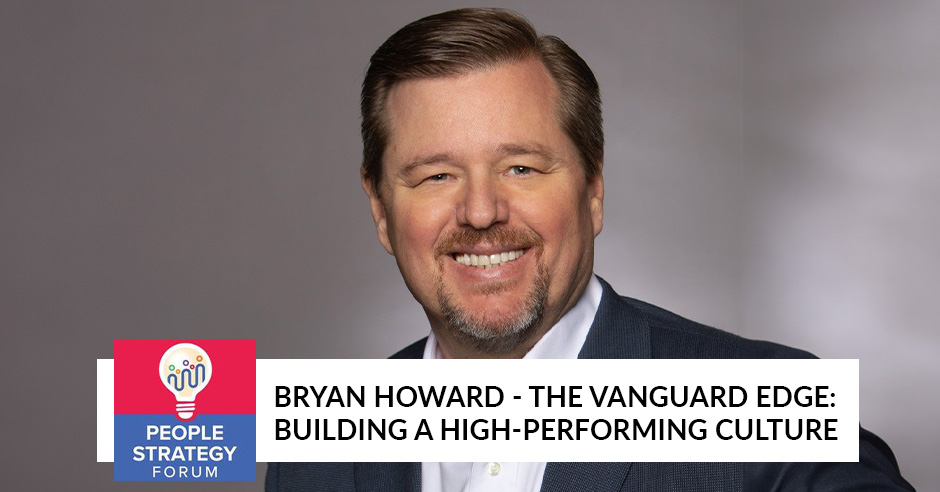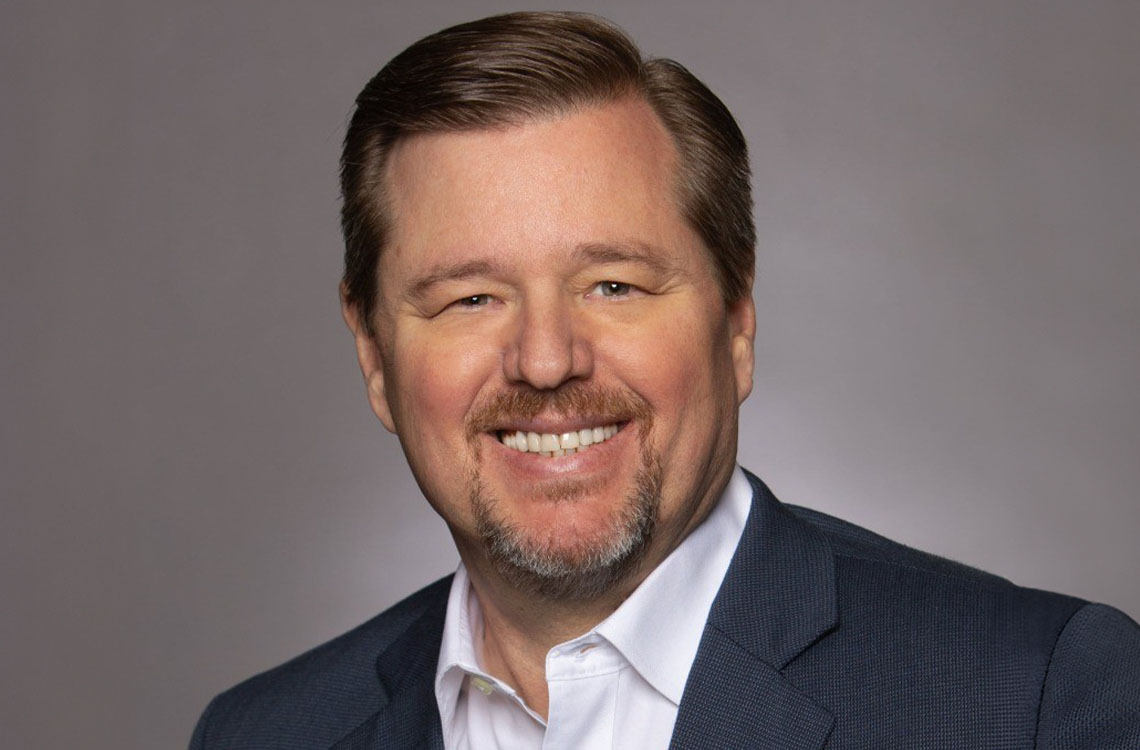Bryan Howard – The Vanguard Edge: Building A High-Performing Culture

An organization can only yield great results if it builds and nurtures a high-performing culture – an environment where everyone thrives and is listened to. In this episode, Bryan Howard, author and CEO of Mercury Performance Group, talks about the six foundational elements of a dynamic corporate culture. He explains why creating the right growth mindset must be the first step in enhancing business strategies and developing a strong collective vision. Bryan also explores the impact of current technological advancements, particularly artificial intelligence tools, on an organization’s continuous learning and improvement.
—
Bryan Howard – The Vanguard Edge: Building A High-Performing Culture
I would love to take you through and introduce you to our host on this episode. We have Howard Nizewitz on the call. He’s a seasoned Compensation Advisor with strategic HR consulting with over 30 years of experience. Howard and I have worked together at Barclays Global. I’m glad to have him here on the call.
We also have Char Miller. She is a strategic skills consultant at the Strategic Thinking Institute. She’s also a Talent Management Strategist and Career and Entrepreneurial Transformation Coach. She helps those people start businesses and live the lives that they need to. Char is an avid traveler and a bit of a global nomad herself and she loves starting up successful organizations. Welcome, Char.
Thank you, Sam. My pleasure.
In this episode, we’re going to be diving deep into the Vanguard Edge and how to build a high-performing culture. We’re thrilled to have Bryan Howard join us here. He is the CEO of Mercury Performance Group. He has over two decades of expertly navigating the complex and strange midterrain of organizational challenges.
He has earned the nickname “The Fixer” among elite business circles. Bryan, that almost sounds like something out of the Sopranos. I’m sure you’ve earned it. Bryan’s proactive approach has reshaped numerous companies by aligning their teams and enhancing performance before crises even have a chance to emerge. His insights are further distilled in the bestselling book, The Vanguard Edge. It’s a great read.
It has some crucial information for anyone eager to build a thriving and high-performing workplace. He shares strategies that not only resolve but also preempt the people’s problems that can derail business success. Join us in this episode of the People Strategy Forum as we uncover the foundational elements of what creates a dynamic corporate culture to enhance your business strategy going forward with Bryan Howard. Welcome, Bryan.
Thanks for having me.
Looking Back
As a tradition in getting started here on the People Strategy Forum, we talk about how you got to what you’re doing today. What is your path and your story? How do you help your clients?
It was a long journey that started in operations. I call it the tale of two careers. The first part of my career was all about operations. I worked in retail. In the staffing environment, not in HR at all, but in operations and sales. I spent a lot of time on the management and leadership side of the business. About halfway through my career, I got the opportunity to do a program called Florida Rebuilds here in the state of Florida where I live.
It was the product of many hurricanes in a row in Florida. I don’t know if you remember seeing the news where they would fly over Florida and you would see nothing but blue tarps on tops of roofs. There weren’t enough people in Florida to clean up the mess, rebuild the homes, and do those kinds of things. I ended up working with a local county in the state of Florida to create a training program for construction workers, which was the staffing company that I was in at the time, and I loved it.
I got the bug and once I got it, I couldn’t let it go anymore. The next thing I knew, I was moved from operations to human resources, specifically learning and development. My career went on from there. I’ve led every department in human resources at some point in time, including the chief people officer role. I told my wife I wanted to retire early. It turns out retirement was starting my own company instead of working for someone else.
Now, I work for everyone else or whoever needs our help, which has been a nice way to transition. That’s how I got where I am now and I love what I do. We have two purposes at Mercury Performance Group. The first is for our clients and customers. We solve people’s problems and then our purpose in life is to help people reach their full potential. Not just employees, but also children who will become employees one day. We’re rooted in our mission and purpose as well.
Book
It’s funny that you mentioned retirement and instead of having a single client, now you have tons of them. I can resonate with that for sure. One of the things that you did in starting up your new business is writing a book. What drove you to that and who are you trying to reach with that book?
One of the things that I’ve seen not just in my HR career but over my entire career was that companies have a hard time building high-performing teams. Teams are the infrastructure that drives company performance. You can say that individuals do, but more and more every day, teams are becoming more important than the individual.
What I wanted to do was put together a book that gave people the six steps that they needed to build a high-performing team in their organization. This book provides a blueprint for doing that. There are six chapters in the book that I call “The Six M’s.” It starts with the foundation of building the correct Mindset to have a high-performing team and then developing a Mission.
You all will get this one for sure, which is the development of a Model with which to run your company, which includes compensation, recognition, and rewards for your employees and the team, and then some Messaging. Interestingly enough, there was a story out a while back. Everybody pretty much knows that Disney bought Pixar.
The reason that they bought Pixar was because Pixar had a team within their unit called The Brain Trust. Everything that happened at Pixar, all the decisions that were made, all of the thinking about how to build stories, movies, things that resonated with consumers, all of that went through the Brain Trust. Disney didn’t buy the animation at Pixar. What they bought was the Brain Trust, the team, or what I call a super team or a Vanguard team.
They asked them to come to Disney and instill all of that idealism into Disney animation, which they did. That’s very important. Pixar’s message is how they were purchased. They said, “We’re the team who does this.” Disney said, “If we want the team, we have to buy the whole company,” and they did. Every company needs Metrics. People need to know where they’re going and they need to know what the goods look like.
Finally, the last chapter is more or less a bonus chapter about Multipliers. The multipliers are how once you’ve built a Vanguard team. You can seek out other Vanguard teams and work together to amplify your business results. That could be cross-marketing or any number of collaboration opportunities. That’s the basics of the book. Foundationally though, Mindset is the very beginning of it and that’s also my favorite chapter of the book.
Growth Mindset
It’s interesting. A lot of leaders in business owner success surrounds mindset. We’re all human and we go through these ups and downs. It’s tough to maintain that true north all the time and that positive mindset. How do you coach your leaders to keep that mindset in focus?
Most of the leaders that I run across, oddly enough, have a good mindset. Carol Dweck, a long time ago, came out with the idea of mindset. That there are people with fixed mindsets and people with growth mindsets. People with growth mindsets are typically the most successful because they believe that no matter what they set out to do, they can do it. The main piece of building a Vanguard team is having the entire team have that growth mindset.
People with growth mindsets are typically the most successful. They believe that no matter what they set out to do, they can do it. Share on XYou have to work hard to shift some people there because some people do feel like they have a fixed set of skills and that they’re not capable of growth beyond that fixed set of skills. For leaders, it is about showing them what’s possible and then having their team buy into that. To do that, I created a tool that’s in the book. The book is about 150 pages total. You can read the whole thing in about two hours. There’s a companion website that goes with it that has about that much content on it.
That’s free with the book but in the first few pages of the book, I introduce a tool called the Vanguard Foundation Framework. That is all about building a high-performing culture. It’s based on mindset. That’s a six-part tool as well with trust and safety as the foundation. That’s how I start helping leaders develop a growth mindset.
Six Building Blocks
It looks like a lot of the elements that you have in your book are around those six steps and so forth. It’s easy to remember. Let’s dive into those six building blocks that you were talking about, building a high-performing team.
To cover them quickly, the six in a row, and then I’ll talk a little bit about each one. The six building blocks, starting with the foundation, are Trust and Safety. That’s the first building block. Without that building block, everything else falls flat. It’s important to note that trust is not an event that happens. You can’t go on a retreat with your team and build trust during a retreat where everybody lines up and falls into each other’s arms. It doesn’t work that way. Trust and safety are ongoing endeavors. It’s something that never ends.
The next building block once you have trust and safety built is Role Clarity. I talked a little while ago about people understanding what it is they do and what good looks like. Role clarity is not only about an employee understanding what they do but also understanding how their role impacts the entire organization. Organizations are a collection of systems. Employees create outputs and those outputs become inputs in other parts of the organization. It’s super important that employees understand or team members understand what their role is, but also how it affects the rest of the organization.
The next building block is Shared Vision and Purpose. Shared vision and purpose is exactly what it sounds like. What is the company trying to do and why are they trying to do it? The next building block is collaborative tools and processes. Some companies are good at this and some companies are bad at it. You have to have a way for people to interact not only within a team but also within the company and then externally as well.
The first six are important and foundational. The last two are how you maintain a high-performing culture. The first one of those is Continuous Learning and Adaptability. It’s been said that companies who aren’t learning anymore are dying or atrophy sets in. You have to continue learning. Finally, this one is super important. It’s the last, but not the least. It is the Collective Reward and Recognition. The reason I say collective reward and recognition is when you reward things, you get more of it.
If you reward behaviors, you get more of those behaviors. If you reward individual performance, you get a lot of individual performance. If you reward team performance or collective rewards and recognition, then you get a lot of team performance. Ultimately, that is more important for the company’s overall success. Those are the six building blocks of the Vanguard Foundation framework. Once you get those right, you will have achieved chapter one of this book, which is the chapter on Mindset.
Trust And Safety
Let’s dive a little bit more into the Trust and Safety aspect, the first step of the six steps. When you think about building trust, what are the first steps that a leader should take to ensure that they’re establishing trust overall?
The first thing I tell leaders, and this one is difficult for leaders to grasp but the single most important thing they can do is be reliable. I say that consistency builds trust. It has to be good consistency. If you consistently lie to your employees, that won’t build trust. If an employee goes to you as the leader of the company and asks a question and then they go to any of your peers and ask the same question, they should get the same answer.
That answer should be as transparent as possible. Once an employee feels like they can reliably ask a question and get a consistent answer from the company, then they start saying, “I can trust what’s going to happen here. I know there’s going to be consistency. I know I can rely on the leaders of this company to do what they say they’re going to do.” That’s the first step in trust. If you think about the two words, trust and safety, trust is your belief in what others will do and safety is your comfort in interacting in that company. You can’t feel safe in a company until you can trust the people who you’re working with. That comes from consistency and reliability.

High-Performing Culture: You cannot feel safe in a company until you can trust the people you work with. That comes from consistency and reliability.
One thing that I’d like to bring up in your experience in working with large financial organizations and so forth is the ability to establish good trust and safety. Back when we were in Barclays, safety was not even a term, but trust is part of that. What are your thoughts about how that has evolved back in the day?
When we first started, it was very much each person for themselves and very individualized rewards and recognition. It has evolved to where we can get a lot further by focusing on team performance and not putting all of our coins on one person. If that person walks out the door tomorrow, then what? That was an issue back in the day. The star would leave and we don’t even have the bench strength to replace the person. There has been an evolution, though perhaps a slow one in financial services, more so than other industries to move to the team concept. There’s a lot of power in having a strong team behind you.
Role Clarity
I agree. As you’re saying, the importance of the team has enhanced in this new world environment where we’re working across several different minds to build the best product and service for each organization. That makes sense. The next thing you were talking about is Role Clarity. Can you dive a little bit more and then understand role clarity, especially in that team setting?
I talked about it being super important that people understand what they’re supposed to do each day. Even more importantly, how that affects the company overall, like how they interact with other departments. You talked about financial services and there’s a good idea that you have a loan originator who is taking the loan application from the client.
It then moves on to a loan processor who is processing documents. Once the documents are all processed and in order it moves on to the loan underwriter who underwrites the loan to finish the process before funding occurs. Each one of those people has a job to do but they also need to understand how their job provides inputs for the next job.
If the application is not good, the processor has a hard time processing the paperwork. That creates aggravation for the client. It’s not a smooth process. Once it gets to underwriting, bad paperwork or bad processing turns into long underwriting times. You can see how customer service is affected. If the employee only focuses on what they have to do, in other words, my job is just to process this loan, then they don’t get the big picture.
They only care about what they do and they pass on their work, whether it’s good or not without any regard for how it affects the client, which is sad when that happens, but it does happen. It happens in a lot of different organizations. This is not in the book, but what I did was give people a tool that I like to use. It’s called a Role Clarity Statement. I like to do these workshops with my clients. The role clarity statement includes three pieces.
The first piece is an action statement. The second piece is a connection statement, and the third piece is a satisfaction statement. You can put all of those in one sentence. What you say is, “I do this,” which is, “I” in some type of verb, “I manage, I lead, or I build.” The connection is a sentence that says something like, “To support the company’s goal,” and then you list out the company goal, and the way you are connected to the company.
I like to include a satisfaction statement at the end, “Which I find rewarding because,” and then you list why you find your job or role rewarding in the company. Some people will struggle with that one because they don’t like their job but that’s a telling thing too. If you can create a statement that says, “I lead a team of strategy professionals who support our goal of helping solve people problems for organizations. I find it rewarding because I’m able to help a lot of people reach their full potential.”
That would be an example of how I would use a role clarity statement for my job here at Mercury Performance Group. It’s a very powerful tool. If you have everyone in your company create a role clarity statement, not only does it help them understand how they plug into the organization and what they’re supposed to do, but they can use that as an elevator pitch for people inside their company and outside of their company to help set expectations. It’s a great way to ensure role clarity.

High-Performing Culture: If you have everyone in your company create a role clarity statement, it helps them understand how to plug into the organization and use it as an elevator pitch for people within it.
Bryan, I want to comment on this because I saw major challenges around role clarity because our job descriptions and positions were outdated. We had 4,000 job descriptions at one of the healthcare systems and there was no way our Compensation Department could fully keep up with the changes in the roles. It was a tactical problem. It was challenging and required a lot of manpower to update the job descriptions.
Today’s jobs are changing fast, it’s almost near impossible unless you work with a company like CompTeam that can speed up that process and make it more quick and efficient. I also want to mention that in a career transformation mindset, as well as my strategic mindset, in which I coach clients around a strategy mindset, I was talking to a colleague who was just laid off from the cable industry, which is the television cable industry. I can’t say what that is.
She was laid off and she’s 48 years old. The thing we talked about was defining role clarity about what position she wanted to apply for. She was baffled. She said, “I’ve been doing data analytics for a cable industry, and that is going away. How do I apply for a job that I don’t even understand exists?” We pulled up LinkedIn and Indeed and all the job classification boards.
It was very difficult for her to figure out where she fit into the new job descriptions or the new job postings. We talked about strategically how we collaborate with her skill set and help her transform, and how she’s looking at new opportunities. Probably the tool you’re talking about would help her. However, it’s the companies that seem from all these job postings that have not come forward enough around technology and change, where even their job postings seem out of date.
It’s hard for applicants to join a company with that lack of role clarity. What are your thoughts about that? The urgency of companies need to get the right job descriptions, help attract the right candidates with the right skill set, and help them coach and develop those new employees so they can succeed. What are your thoughts about that, Bryan?
We could easily do a whole episode about this one topic. It’s a little bit crazy for organizations because to Howard’s point a little while ago, the star player just left. There are a bunch of articles out on the internet that you can read about star players being punished with more work. If you want something done, give it to the busiest person in the organization.
What happens is that their job expands well beyond the job description, sometimes morphing into a completely different job. When the person leaves, instead of sitting down and saying, “What did this person do for us?” They post the old job description and then they’re surprised when they can’t find the right person for the role. They can’t find anybody like Bob or Jane who was in the role before. It’s because they’re advertising for the wrong job and the wrong person.
It needs to be a regular exercise that people need to be responsible for their job descriptions in some way with their supervisors and it should not be an exercise that HR goes through even with a skilled consultant like Comp Team. It shouldn’t be something that HR goes through once a year or something like that because then it’s daunting. If you’re adding something to someone’s job, you should put it on the job description and keep that job description up. It should be part of the manager’s role.

High-Performing Culture: If you are adding something to someone’s job, you should put it in the job description.
I agree. It needs to be “hardwired” into that discussion. A one-on-one is I certainly saw particularly in a superstar setting and a long-term health care organization I used to work with. We had employees who had worked there for 25 years or 13 years like I did. Certainly, the job transformed, particularly in the 2000s with the technology coming in.
I was the first one with a BlackBerry in my whole healthcare system. I agree, but it’s difficult in the one-on-ones to carve out the time and then ensure that that feedback is getting to HR. I don’t want to get stuck on this one topic, but I see where a lot of strategy would come into play in helping HR and leaders refine this.
Role clarity is huge. Interestingly enough, to transition quickly, the next building block is Shared Vision and Purpose. A lot of people would say that those are backward. You should have Trust and Safety, and then Shared Vision and Purpose, and then Role Clarity. When I talk to people, they say that those should be reversed but I don’t agree.
I think the person needs to know what they’re doing, what they’re responsible for, and what good looks like. They then can understand how it fits into the company’s overall goal and purpose. Vision is what they do and purpose is why they do it. That helps with role clarity too. The reason you’re doing this is X or Y, depending on which one you’re talking about, vision and purpose.
Vision
I find that when we talk about role clarity, and then its impact on the vision overall. Vision is what a person is contributing to the organization. I agree with you. We need to put that role clarity into that context because, as you mentioned before in that role statement that you were talking about, understanding what we do daily and how it impacts the overall organization’s mission and vision is quite powerful and meaningful for an employee to experience. Knowing what they’re doing daily makes a difference. What are your thoughts on that overall, Bryan?
I agree with it completely. Remember the three pieces of the roleclarity statement are action, connection, and satisfaction. The connection piece is the why of the company. Why am I doing this as an employee? How does it serve the company? The satisfaction statement at the end is, “Rewarding, because.” That’s the employee’s why. Why do they do it every day? Both of those are very important for building a shared purpose, the purpose of the company, and the purpose of the employee. That creates higher levels of engagement, which ultimately creates higher levels of performance as well.
To the critics out there who think that it should be in front, I can understand how the vision and purpose are something that should be communicated very clearly by our recruiting team and our hiring managers as we’re bringing candidates into the organization. We want to make sure that people who are coming into the organization have that shared vision, that shared sense of purpose, and that intrinsic motivation to achieve that overall. That makes sense. When you think about it, do you often counsel your leaders on how they should be bringing or onboarding people in to ensure that they’re aligned with that mission and vision?
I do. If you’ll indulge me, I’ll give you another tool that you can use. It’s a super easy one. I call it an Employee Alignment Question. It’s ridiculously easy but if you teach this to your employees in your company, you will achieve levels of performance you didn’t even think were possible. It will always align with your shared vision and purpose.
I’m going to use Disney as an example here. Disney World in Orlando has a motto. You could call it their mission. It is, “The most magical place on Earth.” That’s a pretty high bar if you think about a company saying, “I want to create the most magical place on Earth.” That’s going to be Disney, Magic Kingdom, or the old Disney property in Orlando.
When they hire their employees, to your point, they bring them in, I’m going to use the term indoctrination but I don’t mean it in a bad way. I mean it in a good way. They teach people that the client is the number one goal of us being here. We’re here to create a magical experience for our clients. If I take that and flip it to the inverse, instead of saying Disney is the most magical place on Earth, I can give an employee a question that simply says, “Is what I’m getting ready to do, or is the decision that I’m making right now creating a magical experience for my guest?”
This is the inverse of the motto, turning it into a question, but it immediately gives you the answer, because you know whether you’re creating a magical experience or not. I’ll give you an example of what I mean. Let’s say it’s the middle of August. It’s sweltering and it’s 100 degrees outside. You’re an ice cream cart worker at Disney at Magic Kingdom and a mom with a young child comes up to you and wants to purchase a Mickey Mouse ice cream bar.
You have the exchange, you hand the mom the ice cream bar, they take 2 or 3 steps away from the cart and they start opening the ice cream bar. In haste, the child knocks the ice cream bar out of the mom’s hand, it falls on the ground and you know, it’s practically ruined since it’s on the ground where millions of people walk.
you’re the cart person who sold the ice cream and you can see the person standing a couple of steps away from you. You have three choices at this point. First, you can pretend like you don’t see them. That’s the first one. “I didn’t see that.” If you don’t see it, it didn’t happen. The second is you could see them and have empathy, but you could also know that you’re responsible for the contents of the cart and at the end of the day, you should have either ice creams left over or money to replace the ice creams left over. Again, you do nothing.
The third thing is you could reach into that cart and pull out another ice cream cone and go over and hand it to the mom and say, “This is on the house. We’re sorry that happened to you. If you’ll step to the side, I’ll clean this up so no one falls on it.” If the employee is asking the question, “Is what I’m getting ready to do, or is the decision that I’m making creating the most magical place on Earth?” Which one of those three do you do?
You want to make sure that you’re enhancing the guest experience and replacing that ice cream cone, correct?
Absolutely. That’s one example of when you create employee alignment questions. I know I’m using Disney as an example because everybody knows Disney, but you can create those for your own company. For me, if someone says, “Can you do this for me as a client?” All I have to say is, “Does this solve people’s problems? Does it help people reach their full potential?” If the answer to both of those is yes, then it’s something that I can take on as a company, and that’s a client I can take on. If the answer to either of those is no, then I’m going to pass on the engagement. That helps me stay aligned with my values. My employees have the freedom to do that same thing.
That goes back, Bryan, to what you said about trust and safety. If that employee at Disney thought, “I could do this, but I’m going to get penalized for it. They’re going to dock me the money for it,” they’re not going to be eager to do that.
I agree. By the way, in my keynote and in conversations that I have with clients, I have another list of things that should be on the job description in addition to the role clarity statement. One of those things is authority. What authority do I have as an employee in this company? That should be listed right on the job description, to your point, Howard.
Collaborative Tools And Practices
It’s great to empower our people to be able to do the right thing and to achieve the vision of the organization. We need to make sure that we trust and give accountability to our people for that purpose. I think that brings us right into those collaborative tools and practices. How do you define that there, Bryan?
This one is easy for me. I won’t spend a lot of time on it. The whole idea of this building block is you have Trust and Safety, you have Role Clarity, and you have a Shared Vision and Purpose. Now, you need Transparency so that everybody knows what’s going on. It’s good that what your role is, but what about the other person over there? What’s their role? How do I know what they’re doing and how do I know what I’m doing is impacting them? The best way to do that is to have ways to collaborate.
It’s funny, a lot of business people have built workflows before, and a lot of them are inter-department workflows. The workflow only shows the department that is doing the work. What I like to see is workflows with lots of lanes that show where the work moves from department to department, sometimes back again. Maybe a QA process or something like that.
Collaborative tools and processes allow people to see that stuff in real time without having to do a bunch of research. For example, back to my loan example, if I need to see what’s going on with the file, I don’t have to try to get in touch with the next person on the list. I can use these collaborative tools to do that. I can see where the file is, and I can see what the notes are on it.

High-Performing Culture: Collaborative tools and processes allow people to see everything in real-time without having to do a lot of research.
That gives me the ability to do my job and give them what they need without necessarily having to tie up time in a phone call or a meeting, which is helpful for the organization both in terms of being more efficient, but also being more friendly. When people can get the information they need easily, then they’re more likely to go get it. If you make it hard, they’ll say, “I don’t need that. I’m going to make a decision and move on.”
That’s helpful, but when you think of all the collaborative tools that are out there that you see your clients use, which ones do you think are the most effective or most important classifications of those tools?
We’ll call them categories. I think you need to have some way to communicate in real time. You could use Teams or Slack. At our company, we use Zoom chat. I like that product a lot. That gives us the ability to ask a quick question without having to schedule a meeting. If you think about it, even a phone call takes a long time because everybody wants to exchange pleasantries. How are you? How are things? How was your weekend? There’s nothing wrong with pleasantries, but if you need a question answered about a specific item so you can continue working, real-time communication is important.
Other tools depend on what your role is in the company. Project managers would want to use some type of project management tool. Their stakeholders would want to use that too. You might use something like Microsoft Project or JIRA. From a reporting point of view, talk about transparency and keeping people up to date, you might want to use something like Power BI or Tableau. There are a plethora of tools out there and AI is creating new ones every day. Mostly using AI. I hate to list any specific ones, but hopefully, that’ll be helpful from a category point of view.
Continuous Learning
For sure. On the topic of new technologies and AI, that brings up the next pillar that you have there as far as continuous learning. I think that the technology and the pace of business are moving quickly and upskilling and re-skilling are a regular part of the job now. What are your thoughts there?
I think it’s an interesting issue for companies. If you think back to Microsoft, back when Bill Gates was doing his thing, their motto was, “A PC on every desk.” That was their goal. When Satya Nadella took over, you can read about this in the Vanguard Edge. It’s one of the stories in the book. When Satya Nadella took over, he said, “There is a PC on every desk. Computers are almost ubiquitous at this point. What do we have to do? We have to learn as an organization to shift and grow.”
They jumped into cloud computing and AI. They jumped in the deep end with both feet. They didn’t even test the water to see if it was cold. They just jumped in. Their story has been remarkable ever since, including a combination of OpenAI and chatGPT. What’s interesting about it is to talk about if you’re not learning, you’re dying. Google says that it wants to put the world’s information at your fingertips. They built this search engine that spends a lot of time running ads. That’s how they make their money because they give away searches for free.
A company called Perplexity.ai, if you ever use that tool, I suggest you do. It’s amazing. They came in and redefined the search. If you’re doing research, if you want to find articles on something, or if you need to know an answer that’s more than just, “Here’s a bunch of sites you can look at.” On Perplexity.AI, you could type a question in natural language and it will give you the answer. Not only the answer but a bunch of sources for the answer and some other questions that you should probably ask.
If Google rests on their laurels, which they’re not, but if they did rest on their laurels, companies like Perplexity could make Google go away. I have never thought that was possible in a million years, but there are companies out there trying to do it right now. If you’re not investing money in your employees as an organization, then you are dying because your competitors are. That’s the main message here.
If you are not investing money in your employees as an organization, you are dying. Share on XAlso, I’d like to double-underline what you mentioned as far as these small startups coming into place in transforming the market and encouraging the large players to evolve. It goes to say in our modern world or our current environment, a single person can have a huge amount of impact on their industry, their practice, and the world overall by putting a good idea to work and understanding the gaps in the marketplace.
This is where we get back to building block number one. It’s Howard’s point too, the one that he made earlier, which is, “When people feel safe giving their ideas and you help them learn and grow as an employee, you will benefit from their ideas.” Sure, you’ll have some failures. I love the whole quote about Thomas Edison, “He didn’t fail 10,000 times, he found 10,000 ways not to make a light bulb.” If you’ve invested all that money, time, and effort into your employees, they could have the next big idea. It could be the next Google or the next Microsoft. Everybody heard the story of how they accidentally invented the glue for Post-it notes. That person could be in your company. All they need is a little bit of help to grow.
Collective Rewards And Recognition
Let’s go to the final pillar that you have there, Collective Rewards and Recognition. One of my favorite topics as a Compensation Specialist. What are the key pieces that you coach your leaders on there?
This one is simple. You’ll laugh when I say it, but there is no better investment or no investment that has a higher ROI than recognition in your company. Saying thank you followed by the reasons. You don’t say, “Thank you for being an employee.” That doesn’t make any sense but if you say thank you for doing this specific thing here’s how it helped our client, our customer, our company, or this other employee. You’re very specific about why you’re saying thank you. It’s free. It doesn’t cost anything to do that. The return on investment is infinite because if you do that over and over again, what gets rewarded gets done more often. I said that earlier.
No better investment has a higher ROI than recognition in your company. Share on XIf you want people to behave in that way, to do those things that you’re going to be thankful for, then make sure you say thank you for them so they feel rewarded and do them. From a compensation point of view, you have to pay people well. That’s very important, but you also have to recognize them in other ways too, in ways that are meaningful to them. That doesn’t always mean payroll or benefits. It could be being recognized as a top employee on a team.
Back to the first word in this, which is Collective Reward and Recognition. Recognize your teams first and then recognize the members of the team. If you do that, you can do it in such a way that you’re recognizing their contribution to the team, not their contribution necessarily to the company overall as an individual. To Howard’s point earlier, which I thought was brilliant, if you have one rockstar on your team and they leave, now you have no rockstars.
If you have five people on a team, you can find a way to make them all rockstars in their own right, celebrate the way that they contribute to the team in their special way, and celebrate the team’s success, then you’ve created collective reward and recognition. That’s the final or what I would call the capstone of the Vanguard Foundation framework.
If you have all six of those things together, you are going to have a company that does amazing things. By the way, John Kotter is a Harvard professor who has written many books. He wrote a book about company culture. One of the most amazing things about that book is they found when doing the study, that they studied 200 companies across 10 years, not necessarily the same industry, but like size, timing, environment, and economy.
What they found is that companies that have a high-performing and purposeful healthy culture perform 600% better than companies that do not. If you only need one reason from this episode to go implement those six building blocks of the Vanguard Foundation framework, sit back and think about what your company would be like if you could perform 600% better than you do today.
Episode Wrap-Up
Great points there. I appreciate you taking us through those six points in detail and so forth. For our audience who want to learn more, what are the first steps that they should take? Should it be going through your book or reaching out to you? What do you think?
They’re more than welcome to reach out to me anytime. My email address is [email protected]. They can send me an email anytime. You can also get the book on Amazon, Barnes and Noble, or Kobo. It’s pretty much everywhere books are sold, but I’ll make a deal for your audience. If you send me that email, make the subject line “Vanguard” and send me a mailing address. I’ll send you one of these books in the mail for free. After you look at the book, I’m more than happy to have a conversation with you about the things that you felt like you’d like to change in your company to achieve that 600% that John Kotter talked about in his book.
What a great offer. Thanks, Bryan for sharing your wisdom. This is a great session. I enjoyed it.
Thank you very much for having me. I enjoyed it.
Take care everyone and we look forward to you tuning in next week on the People’s Strategy Forum.
Important Links
About Bryan Howard
 Bryan Howard is the CEO of Mercury Performance Group, a leading business consulting firm specializing in enhancing human performance and leadership across various industries. With over 20 years of experience, Bryan has become a recognized expert in leadership development and organizational transformation. His unique approach centers on the “5 G’s of Success”: Grit, Growth, Gratitude, Generosity, and Grace, principles he integrates into his work to help organizations achieve sustainable improvements in performance and culture.
Bryan Howard is the CEO of Mercury Performance Group, a leading business consulting firm specializing in enhancing human performance and leadership across various industries. With over 20 years of experience, Bryan has become a recognized expert in leadership development and organizational transformation. His unique approach centers on the “5 G’s of Success”: Grit, Growth, Gratitude, Generosity, and Grace, principles he integrates into his work to help organizations achieve sustainable improvements in performance and culture.
Bryan’s career has spanned multiple sectors, including technology, healthcare, and finance, where he has played a pivotal role in developing strategies that boost organizational efficiency and employee engagement. He is also a sought-after speaker and contributor to business publications, sharing his insights on leadership and performance management.




